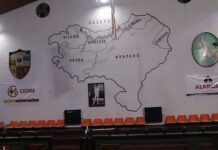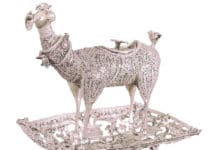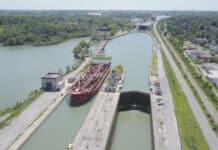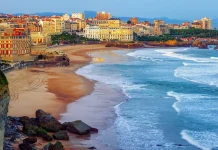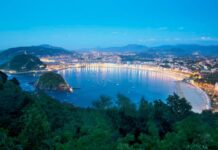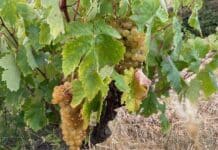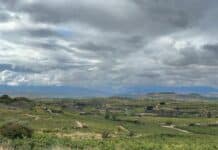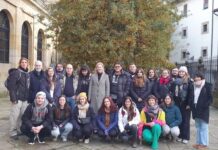700 Killed in La Ribera: the Three Months of Terror
(First part)
I was a kid when I discovered Franco was a murderer. I didn’t need the news to hide the truth or lie about what was happening in Francoist dungeons; in my family, a lair of good people who were Communist, Socialist, Anarchist, and even right-wing, always told another truth, the truth of the defeated. At family reunions, during that “Pax Franconiana” there was always time for after-meal drinks and debates, and despite only being high-school graduates (if that), they were great teachers of good ideas, good ideals, and more than anything the hope for a return to democracy, remembering the people who were killed and the families that suffered reprisals.
The Transition for me was hardly model; rather, it was a fiasco, where a harsh dictatorship was whitewashed into a benevolent one, with political parties that, over time, managed to continue on, sometimes with the “caste”, and other times as part of the system that perpetuates the defective transition to democracy of 1975. There was no democratic break with Francoism. Some called the transition the lesser evil, but I call it the greater evil, as there were no trials against the Francoist criminals, mass murderers, and torturers. What’s more, some of those same people enjoyed high positions of civil, political, military, and police authority during those years of “transition to democracy”. For starters, the Head of State that replaced Franco, Juan Carlos of the Bourbons, now, the king emeritus, was somehow able to swear an oath to the Fundamental Laws of Franco, the Constitution of 1978, and set up his own military self-coup in 1981, all in less than two decades.
I’m writing this because I am really beginning to get worried about the fascist uncovering we’re witnessing. Two years ago, I went to a Residents’ Meeting that had been convened by the previous city government to debate changing the names of the streets that still carried fascist symbolism; that is, the streets with the names of people from Tudela which had been used by Francoism to perpetuate itself symbolically. The names of these people does not generally mean they were bad people. In that Meeting, I was able to witness that the Transition had not just been a failure, but also that Francoist ideas were again on the rise, this time just all dolled up.
During these days of confinement and de-escalation, and everything I’m seeing, hearing, and observing about the global COVID-19 pandemic have only cemented my belief that there is an important sector of society which, by using victims, however there were victimized, and by appropriating the constitutional Spanish flag, regardless of the common good and in benefit of a few elite (as fascism is always wont to do), is more than willing to take to the streets and do anything. Since I believe the left makes the mistake of being too good (otherwise, they wouldn’t be the left), fascism can therefore only be beaten with culture, ideas, and a teaching of history, so, in order to ensure the memories, justice, and truth always remain, and the reconciliation is democratic and not imposed, I have decided to share a few snippets of our more recent history here in La Ribera, which are still unknown, because I’m convinced there is still a generation of people from this area who do not know their own close history.
Seventeen years ago, the Parliament of Navarre, on March 10, 2003, with 28 votes in favor (from the Spanish Socialist Party, the Basque People Party, the Basque Nationalist Party, Convergence of Democrats of Navarre, United Left, and Batzarre) and the 22 abstentions of the Navarrese People’s Union, passed a Parliamentary Resolution on the memory, recognition, and moral reparations of the victims of those murders and reprisals carried out during the Fascist Military Coup of 1936 in Navarre, at the behest of the Association of the Families of those Murdered in Navarre (AFAN).
That Parliamentary Resolution stated that Navarre was one of the places where the Military Coup against the democratically-elected Republic was organized and started, meaning there was no actual war. Despite there not being any military fronts in Navarre, THREE THOUSAND people were killed for the mere fact of being considered close to the Republic. The murders were organized by the insurgents, run by “Military Committees”, without any semblance of a trial. All those murders took place with the consent of the ecclesiastical hierarchy of the Catholic Church, which had publicly come out in favor of the “Military Uprising”, and which in some cases played a direct role in the murders.
The families of those killed didn’t just have to deal with the drama of the loss of their loved ones, but also all the injustice of the triumph of the fascists and their imposed dictatorship. For many years, and even today, there were and are people who are missing, families divided up between jails and exile, psychiatric diseases early deaths which accompany many of the families that suffered reprisals. Their properties were expropriated by their victorious neighbors, and they were condemned to perpetual humiliation with haircuts, “walks”, castor oil, and the daily horror of public threats and insults from all sides: the Francoist propaganda machine, the armed forces of the coup, town mayors and councilmen put in place by the Military Governors, and even church pulpits, with “obligatory mass” enforced under penalty of fine or jail.
No Navarrese institution that had been involved in the Military Coup or in the Dictatorship recognized its terrible acts, nor ever publicly apologized. After Franco’s death, the families and friends of the murder victims unearthed their bodies from ditches, fields, and under garden walls, and they’re still doing so today. The Catholic Church has yet to admit its crimes, or ever publicly apologize. In other places in the world, when dictatorships ended, one of the many things that normally happened was the creation of “truth commissions”, and public spaces were opened at the highest levels to debate, clear up, and get to the bottom of what had happened, to reestablish truth, justice, memory, and heal the wounds of the past; many even made showing nazi or fascist symbols unconstitutional.
In Navarre, a veil of silence has been placed over these events, and while other countries’ histories and wars and events are studied, the truth about what happened at home is silenced. Despite having affected thousands of Navarrese citizens of the last generations, we still learn about what happened only through family and those who have taken the time to learn the truth for themselves. Today, we duck our heads, fleeing from the truth, turning a blind eye to it, and history is left empty, and Navarrese society is still ill, and the unwritten rule is to not look yourself in the mirror to avoid seeing your most recent past.
The Parliamentary Resolution of March 2003 was an institutional act that tried to say no to those horrors, never again, for anyone. The Ribera de Navarra region, which in both percentage and absolute terms was the one which suffered most, saw more than 700 residents killed as the insurgents went from town to town over three months.
In the sixth edition, corrected and enlarged, of the book “Navarra, de la esperanza al terror, 1936” (Navarre, from Hope to Terror, 1936), published by Altafailla and AFAN, author José María Esparza says in the foreword: “the book, the child, and the arrow stop belonging to us the moment we release them to the air and to life”. So, this incredible work done by innumerable people, among them Tudela historian Emilio Majuelo Gil, has become, and still is today, the light to continue revealing what no one tells, what is still taboo, what no groups of friends ever discuss to new generations, because there’s always someone who says “stop talking about politics, only talk about soccer, bulls, and women”, like under Franco. And here we’re talking about three thousand murdered Navarrese, 700 of them from La Ribera.
Specifically, the murder victims were: in Ablitas 9, in Arguedas 30, in Buñuel 50, in Cabanillas 14, in Cadreita 27, in Carcastillo 8, in Cascante 20, in Castejon 25, in Cintruenigo 20, in Corella 87, in Cortes 38, in Fitero 49, in Fustiñana 12, in Milagro 78, in Monteagudo 19, in Murchante 8, in Ribaforada 40, in Tudela 65, in Valtierra 40 and in Villafranca 40. Moreover, 12 with houses in Navarre were murdered in Aragon, 19 took refuge in France, 20 died as volunteers in the Basque Army, and one from Ribaforada died in a Nazi concentration camp in France. As the information is constantly being updated, that number will have to be revised.
The Military Coup had been prepared in Navarre long before July 1936. Between 1932 and 1933, the Carlists organized a paramilitary corps of Red Berets and Requetés, led from the shadows by Count Rodezno and later by Fal Conde. Traditional Catholic Navarrese Carlism was aided by Mussolini, with 1,500,000 pesetas, 20,000 rifles, 20,000 hand grenades, 200 machine guns, and the promise that when the Military Coup began, more help would come; he kept his word. Several expeditions of groups of young Carlists were sent to Italy to train in how to use the weapons, including Jaime Del Burgo, Pascasio Osácar, the parish priest of Noain, and Emiliano Larrea in 1934. The Requetés used the mountains of Urbasa, Andia, and Ezcabarte to practice their paramilitary training. The arrival of General Mola to Navarre in March 1936 sped the military conspiracy up.
Meanwhile, in La Ribera, like in the rest of Navarre with the triumph of the Popular Front, the parties and labor unions of the left pushed for their demands to be met by organizing large marches and protests. The demands of the Ribera dayworkers focused on recovering the communal lands and corrals that had fallen into the hands of a few landowners after the breakup, and on the application of the Agrarian Reform, occupying farms and lands.
The Military Coup started on July 18 and on that same day, the town-to-town murders of more than 700 people of La Ribera began. With this first part, I’m starting a series of articles in which I will tell the facts and events that happened, town to town, in our La Ribera area, with the names of the victims and the names of those who are known today to have been murderers.
Last Updated on Jan 16, 2021 by About Basque Country




